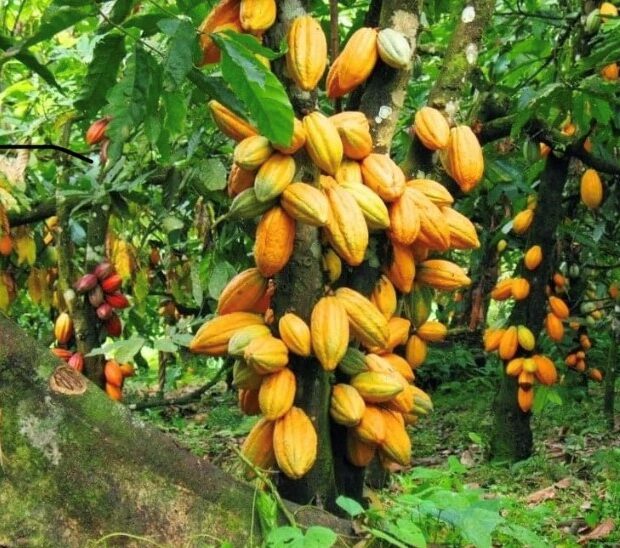Despite the dreadful impact of COVID-19 on economic activities, cocoa production for the 2020/2021 crop season far exceeded its projected target.
With the crop season even yet to come to an end, about 1,041,258.63 metric tonnes of cocoa has been recorded as at last week – which is far beyond the set target for which a syndicated loan worth US$1.3billion was acquired.
Chief Executive Officer of COCOBOD, Joseph Boahen Aidoo, believes that by close of the 2020/2021 crop season production will be at around 1,060,000 metric tonnes. Based on the aforementioned situation, COCOBOD is considering increasing its loan target for the 2021/2022 crop season to US$1.5billion.
However, in spite of the recorded boom for the year, the CEO revealed that a lot of purchased cocoa beans are still stuck in warehouses due to inability to export the commodity.
“Warehouses are full, and this is also affecting external marketing of the cocoa as well as influencing the terminal market price,” Mr. Boahen Aidoo added.
That notwithstanding, the European Union is determined to legislate against deforestation and cocoa production in forest reserves. Consequently, COCOBOD has rolled out the Cocoa Management System (CMS) to make sure the country is not found wanting or on the EU blacklist.
The CMS is an integrated comprehensive database that COCOBOD is collecting, and when fully developed will interlink all operation activities with key stakeholders and players in the industry.
The database will interlink the Licenced Buying Companies, pollinators, banks, weather systems and every other thing that relates to cocoa.
The data-gathering process for this purpose is underway and currently happening in the Western, Ashanti and Eastern Regions. It is expected to cover all cocoa-growing areas by close of the year.
When that’s done, it means any farms existing in the protected forestry areas will be exposed because GPS is being used to connect the farms to the database.
“If one’s data is not on our system, the farmer will not be able to sell his/her cocoa,” Aidoo added.
Last year, COCOBOD syndicated US$1.3billion for the 2020/2021 crop season; but because the production of cocoa far exceeded our projections, the money was inadequate. Hence, it took Licenced Buying Companies (LBCs) like Olam that was buying about 70,000 metric tonnes ahead and paying in advance to support the sector.
Though cocoa producers have defied the pandemic and are recording increased tonnages, it is important that COCOBOD works to ensure their labour is adequately rewarded.
Cedi struggling against the US dollar in recent times
The local currency is struggling against its major counterpart trading currency, the US dollar, as it records its highest depreciation since beginning of the year.
As at Tuesday, September 9, 2021, the cedi was trading at GH¢5.85 against the dollar, compared to GH¢5.76 it traded at the beginning of the year – representing 1.64 percent depreciation.
The tables began to turn in June when the cedi started depreciating in July. It saw a 0.6 percent depreciation in the month and followed with -1.5 percent at the end of August and currently stands at -1.6 percent.
Nana Yaw Owusu Banahene, a financial expert, has noted that businesses are recovering from COVID-19 and this which has caused an uptick in business activities.
However, since Ghanaian businesses are primarily import-driven, there is a huge demand for FX that far outweighs supply – hence causing the recent depreciation of currency.
Even though there is currently some moderate stability, there is still huge pressure on the currency. In times like these, the Bank of Ghana must intervene to save the local currency because it is affecting the cost of living – most items in the open market have experienced some price hike and this is making life quite expensive.
Already, the central bank has introduced a domestic gold purchase programme that is aimed at diversifying the traditional means by which the country builds its foreign exchange reserves.
Additionally, the country received its share of the Special Drawing Rights (SDR) of US$1billion from the International Monetary Fund (IMF) to help shore-up foreign exchange reserves at the Bank of Ghana, and we expect that to have a moderating effect on the local currency.
This means for the ordinary consumer prices of items like fuel will continue to rise with the local currency depreciation, because the commodity is sourced from the world market and is priced in dollars. That is just one item, so consider the list of imported goods in the market and its attendant effect on prices!
It is the hope of many that the situation does not worsen, because the implications are clear










